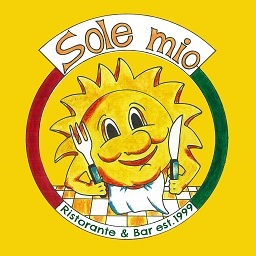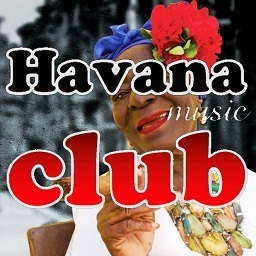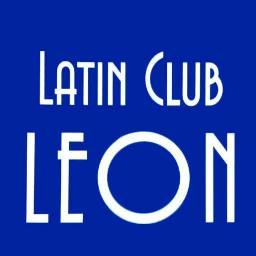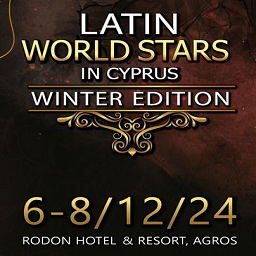Search Results for: Latin dance world
Orestes Vilato
North America / USA / New York
Orestes Vilato. Cuban Multi-Percussionist.
Cuban multi-percussionist, Orestes Vilato, is undoubtedly one of the greatest figures in the history of the Cuban drums known as timbales.

During the fifties, the Vilato family moved to New York, salsa capital of the world, where young Orestes would rise to fame as an innovator of his beloved traditional instrument, “Los Timbales”. While living in New York for 25 years, Orestes was intimately involved with many musical organizations that played seminal roles in shaping the course of Latin Music around the world.
Among the many groups were: Fania All Starts (founding member), Ray Barretto, Tipica 73 (founding member), Los Kimbos (founder-director), Tito Puente, Johnny Pacheco, Cheo Feliciano, Ismael Rivera, Joe Cuba, Eddie Palmieri, Ruben Blades, La Lupe, Celia Cruz, Rolando La Serie, Chico O’Farril, Lionel Hampton, Los Chavales de Espana, Cal Tjader.
Other artists with whom he has recorded or worked include: Winton and Bradford Marsalis, Paco De Lucia, Whitney Houston, Linda Ronstadt, Aretha Franklin, Willie Nelson, Herbie Hancock, McCoy Tyner, Cachao, Andy Garcia, Emilio Estefan, Gloria Estefan, Paquito de Rivera, Dave Valentin, Mongo Santamaria, Armando Peraza, John Santos, Rebeca Mauleon, Giovanni Hidalgo and Raul Rekow.

In 1981, Mr. Vilato moved to the San Francisco Bay area, where he still resides with his family. From 1980 to 1989 he recorded and toured with the renowned Carlos Santana Band.
Orestes was nominated for a Grammy in 1995 (Latin Jazz category) for his CD, Ritmo Y Candela With Patato and Changuito. In 2009 his solo CD Its About Time was nominated for a Latin Grammy.
Orestes has recorded several movie sound tracks that include: Our Latin Thing, Mambo Kings, Carlito’s Way, Steal Big Steal Little, The Bird Cage, Dance With Me, Just A Ticket, Things To Do In Denver and The Lost City.
He has been a special guest artist in multiple Jazz Festivals around the country and Puerto Rico including the San Jose Jazz Festival. He has performed and taught at numerous music conservatories including The Berkeley School of Music, UCLA, Fresno University, Standford University as well as many conservatories overseas.
Orestes was given tribute at Yerba Buena Garden, Monterey and San Francisco Jazz Festivals.

Orestes’ style is one of the most imitated and emulated among recording-performing artists.
Betty Zapata ¨The Lady of Salsa¨
Latin America / Venezuela / Caracas
In Venezuela, Caracas, the neighborhood is a way of life with its own identity. The neighborhoods of the entire National Territory, its inhabitants, become outstanding characters. Such is the case of Betty Zapata who was born in the emblematic La Pastora Parish located in the Capital (Caracas). There he spends his childhood in a neighborhood of colonial and historical houses of Venezuela.

There are many memories of that legendary Zone, they are inevitably built by those associated with survival, preparation, development, work, love, struggle and family formation, its magic and what marked it for life… . “Music”.
My connection with music is due in part to the fact that I live in a popular area where the music that was heard was Afro-Caribbean (mostly Salsa), the parties or meetings in my house and the neighborhood were always enlivened by that type of music, the most rooted and sticky collectively, originating the most varied dancers.
In the Carnestolendas festivities, improvised platforms (Templetes) were installed to stage the most varied costume and dance contests. Leaving my childhood and beginning my adolescent stage, I participated in dance competitions, obtaining recognition and prizes that were awarded to the young people of my generation.
I attended festive celebrations (dance meetings) with my older sisters at the age of 12, not because I was a dancer, but to not leave me alone, since I was the youngest of 3 sisters, this allowed me to share with people older than me and which I was learning the different dance styles “remembering with great affection the Cayender family, made up of excellent dancers” they are part of my school and love for dance. My cadence, flavor and body movement also allowed me to learn until I had my own dance style.
The music of the moment was the Danzones, Billo’s, Melodicos and in my house my sisters listened in the 70’s to Joe Cuba, Ricardo Rey and Bobby Cruz, Eddie Palmieri, the Latin Dimension prevails, Grupo Mango, Salsa Mayor, La Banda and his Young Sauce. That stuck with me forever and I felt drawn to Salsa.
That gave me the basis to fully incorporate myself into the exciting world of music. In the Barrio salsa is something essential, if you don’t dance it, enjoy it, feel it, you’re nothing.
Attending a meeting, an event, a concert, a presentation, a party or a meeting and there is no salsa, you feel an emptiness since with it we enjoy, we share, we dance and it definitely puts us to enjoy.

In the course of my 6 decades of existence, I have not ceased to be linked to it in different facets: as an audience, spectator, guest, contestant, jury, organizer, producer and director of events.
Each of these participations has allowed me to stand out, stand out and be a well-known, popular and loved person, a reference in the organization of a good party, night events, presentations of representative groups of the world of Salsa such as:
Ray de La Paz, Herman Olivera, Frankie Vásquez, Bobbie Valentin, Willie Rosario, Spanish Harlem Orchestra, Sonora Ponceña, La Selecta, Mulenze, Carlos Cano Estremera, Julio López, Yolandita Rivera, Mambo Legends among others, and for those from the Patio: Bailatino, Rumberos del Callejón , Ensamble La Calle, Albondiga y su Pandilla, Repicao, Tributo, On Fire, La áquina de la Salsa, La Negramenta, Gerardo Rosales, Javier Plaza’s Son Risa Orchestra among others.
This has allowed me to be an obligatory reference when it comes to producing and making an event of great importance and musical quality where the Dancing Public is respected and appreciated, providing them with the comforts to enjoy an excellent show and Latin music is seen as an element of identity that belongs to all of us to live it and feel it.
I am (Betty Zapata) currently planning and developing projects in the short, medium and long term and to give you a heads-up I am giving you the scoop: I am here with my radio program to promote, support, disseminate and promote our exciting and magical world of Caribbean music.
Meet the venezuelan Oeste 11 orchestra
Latin America / Venezuela / Caracas

Did you know that tropical music arises from the region surrounding the Caribbean Sea and the Antillean region of the American continent, where there is a mixture of rhythms from the African continent, fused with folklore and rhythms from the different American countries?
In this edition we can say that many music and dance lovers tend to choose Salsa and/or Tropical music, since they are musical genres that people enjoy as a couple or in a group, whether at an event, party or festival. giving it essence, life and sharing among all the members, for this reason there are many singers and members of orchestras that specialize in these genres, today we have as a special guest the Oeste 11 Orchestra from Caracas, Venezuela.

It was made up of young musicians belonging to the Venezuelan Orchestral Movement, among them the Venezuelan percussionist Alejandro Alfonzo who baptized it in 2007 with the name “Oeste 11” for all the musical experiences they shared since childhood, because most of their members were formed together in said parish.
It is currently made up of 13 musicians, who specialize in the musical genre “Salsa”, giving life to 2 discographies, the first entitled “AL NATURAL” that came out in 2015, consists of 8 unreleased songs and a cover. “With his songs I lie, Al natural, I forgot about you, Forget you, Medicine, You made fun of me, I have decided to forget you, My sweet friend and Dancing”


And for this month of May their second discography “Amor y gusto” will be available, which will be composed of 11 unreleased songs, and to give a preview of the new album they already presented us this March 31 their first single (theme), titled “ I want you to feel Mine”, which is accompanied by a music video that you can enjoy on her YouTube page https://www.youtube.com/watch?v=EpleKvxCg9Y.
And over the years they had the opportunity to share on stage with several well-known artists and/or groups, such as the Latin Dimension, Rafael el Pollo Brito, Proyecto A, Los Satélites, Magia Caribeña, Grupo Mango, and other national artists. of different musical genres.

Among their achievements, they mention that in the National Festival of Salsa Orchestras Dile no a la Payola de PDVSA la Estancia were the winners in 2014, they were also selected to honor the Sonora Ponceña for her 60 years of artistic career and were in the Festival Sounds Caracas.
If you want to listen to their discographies “Al Natural” and “I want you to feel mine”, they are available worldwide on the platforms Amazon, Itunes, Spotify, Tidal, Google Music, among others.
For more information:
- E-mail: [email protected]
- Facebook: https://www.facebook.com/Oeste11/
- Twitter: https://twitter.com/oeste11?lang=es
- Instagram: https://www.instagram.com/oeste11/?hl=es-la
- YouTube: https://www.youtube.com/channel/UCR-wi3ybnoTbLH9C3-8keMA
- Phones: +584242251360 / +584265161630 del manager Alejandro Alfonzo

Mulatu Astatke, the first African to earn a PhD from Berklee College of Music
Mulatu Astatke (or Astatqé) (Jimma, Ethiopia, December 19, 1943) is an Ethiopian musician, composer and arranger. He is considered the father of Ethio-Jazz.
His musical training took place at the Trinity Laban Conservatoire of Music and Dance in London, where he studied clarinet, piano and harmony, New York and Boston, where he was the first African student and also the first African to earn a PhD from Berklee College of Music; there he was trained in vibraphone and percussion.

Later he combined the influence of jazz and Latin music with traditional Ethiopian music.
My desire to start making Ethio-jazz began in London while I was studying there in the 1950s; then I knew I wanted to be different with my music. I looked for musicians from different African backgrounds and saw that they were successful and promoted the culture of their country.
However, there was very little from East Africa and Ethiopia, so I decided at that point that I would create something unique based on the rich heritage of our music and show how much we have contributed to the world of music in general.
That journey began to take shape at Berklee College in Bastan. I was the first African musician to study there and that period was very important for me.
I learned the technical aspects of many different musical forms and my teachers gave me the confidence to move in my own direction, teaching me that it was okay to be different in my music and try something completely new.

Ethiopian cultural music is based on four modes tezeta, bati, anchihoy and Ambassel and within my music, I knew that those modes could not be played.
They had to remain at the center of my music or the whole character of the sound would change and become distorted. I began to add beautiful colors with chords, voicings, bass lines and rhythm sections, writing progressions that fit together well. It’s very difficult to write 12-note music around the Ethiopian modes without destroying them.
In the mid-’60s I returned to Addis, but I kept going back and forth to the United States.
At that time, no one was fusing Ethiopian music with jazz.
In my country there was the First National Theater Orchestra, and both the police and the army had their own orchestras.
There were also bands like the Echoes and the Ras Band.
Musicians at that time based their melodies strictly on the four Ethiopian modes, using techniques like the “canon,” with melodic lines echoing each other.
With Ethiopian jazz, I consciously wanted to expand and explore the modes in different ways.

I formed a group called The Ethiopian Quintet in New York, made up of a mix of Ethiopian, Latino, and African-American musicians (there weren’t many Ethiopian musicians in the United States at that time).
The band included trumpeter and pianist Rudy Houston, who later played with Yambu, and Felix Torres, who played with Sonora Ponceña.
I have always felt a deep connection between Latin and African music; I traveled to Cuba to find out where the first American landed, I heard their musicians play and dance and although they sang in Spanish, the tempo, rhythm and feeling were very similar to aspects of African music.
So, with the Ethiopian Quintet, I wanted to show the African contribution to Latin music and it was my first opportunity to experiment and start developing my vision of Ethio-Jazz with this band.
With the American and Puerto Rican musicians in the group we created a different atmosphere and arrangements.
It was a great opportunity for me and they loved what I was writing and the direction I was trying to take.
We did quite a few concerts, some Spanish weddings, events upstate New York and in Manhattan.
We played at the Village Gate with Dave Pike, a great friend of mine at the time, one of the world’s greatest vibraphone players. He played a lot with Herbie Mann and I remember sitting in to watch one of his recording sessions.
I saw a lot of other great musicians in concert, from Coltrane to Bud Powell and Bill Evans. On the New York live circuit I met a producer called Gil Snapper.

Gil was a very nice and interesting guy and worked with musicians of many different styles.
He picked up on my music very quickly; we got on well and he invited me to record with The Ethiopian Quintet, so our first albums with him were ‘Afro Latin Soul’ Volumes 1 and 2, both recorded during 1966.
On the first volume, I performed an adaptation of an old Ethiopian warrior song, ‘I Faram Gami I Faram’.
I would have liked to have an Ethiopian singer for the song, but it was sung in Latin and the lyrics were translated to the singer so he could sing it in Spanish.
Nevertheless, it turned out to be a nice combination. The album included other compositions that were important steps for me: ‘Mascaram Setaba’ (Summer is Coming), ‘Shagu’ and ‘Almaz’. On the second volume, Rudy Houston suggested a piece of music that we called ‘The Panther’, in reference to the animal, but also in recognition of the Black Panthers, who were very active in the civil rights struggle in the United States at that time.
On this album, one of my favorites is my composition ‘Girl From Addis Ababa’, which worked very well as a fusion of Ethiopian modes and R&R rhythms, an indicator of the more refined Ethiopian jazz sound of my later album for Worthy, ‘Mulatu Of Ethiopia’ (1972). It also included my new arrangement of the 1950s tune ‘Lover’s Mambo’.
Both albums include nice arrangements also by Oscar Garcia, Rudy Houston and Gil Snapper as well.
I feel proud of the recording when I listen to it again. It was an important moment in my career and it was a very interesting and progressive time to be in New York in the mid-60s.
I was there at the same time as Hugh Masekela, Miriam Makeba and Fela Kuti and, each in their own way, we tried to do our part to put Africa on the map of contemporary jazz.

Mulatu Astatke, April 2018
Mulatu Astatke & His Ethiopian Quintet – Afro-Latin Soul (1966, R-2018)
Tracks: Afro Latin Soul: 01. I Faram Gami I Faram (Mulatu Astatke)
02. Mascaram Setaba (Mulatu Astatke)
03. Shagu (Mulatu Astatke)
04. One For Buzayhew (Mulatu Astatke) ke)
05. Alone In The Crowd (Gil Snapper)
06. Almaz (Mulatu Astatke)
07. Mulatu’s Hideaway (Mulatu Astatke)
08. Askum (Rudy Houston)
09. A Kiss Before Dawn (Gil Snapper & Weiss)
10. Playboy Cha Cha (Oscar Garcia) Afro Latin Soul Vol. 2:
11. The Panther (Boogaloo) (Rudy Houston)
Konjit (Pretty) (Oscar Garcia)
Soul Power (Rudy Houston)
Lover’s Mambo (Traditional, Arr. Mulatu Astatke)
Love Mood For Two (Rudy Houston)
Jijiger (Rudy Houston)
Girl From Addis Ababa (Mulatu Astatke)
Karayu (Oscar Garcia)
Raina (Rudy Houston)
Musicians:
Mulatu Astatke (Vibraphone, Piano, Drums)
Rudy Houston (Piano, Trumpet)
Robert Cuadrado (Bass)
Felix Torres / John Perez (Congas / Bongos on Vol. 1)
Pete Iglesias (Congas on Vol. 2)
Tony Pearson (Timbales)
Information provided (October 5, 2024)
Also Read: Flora Purim has earned her two Grammy nominations for Best Female Jazz Performance























